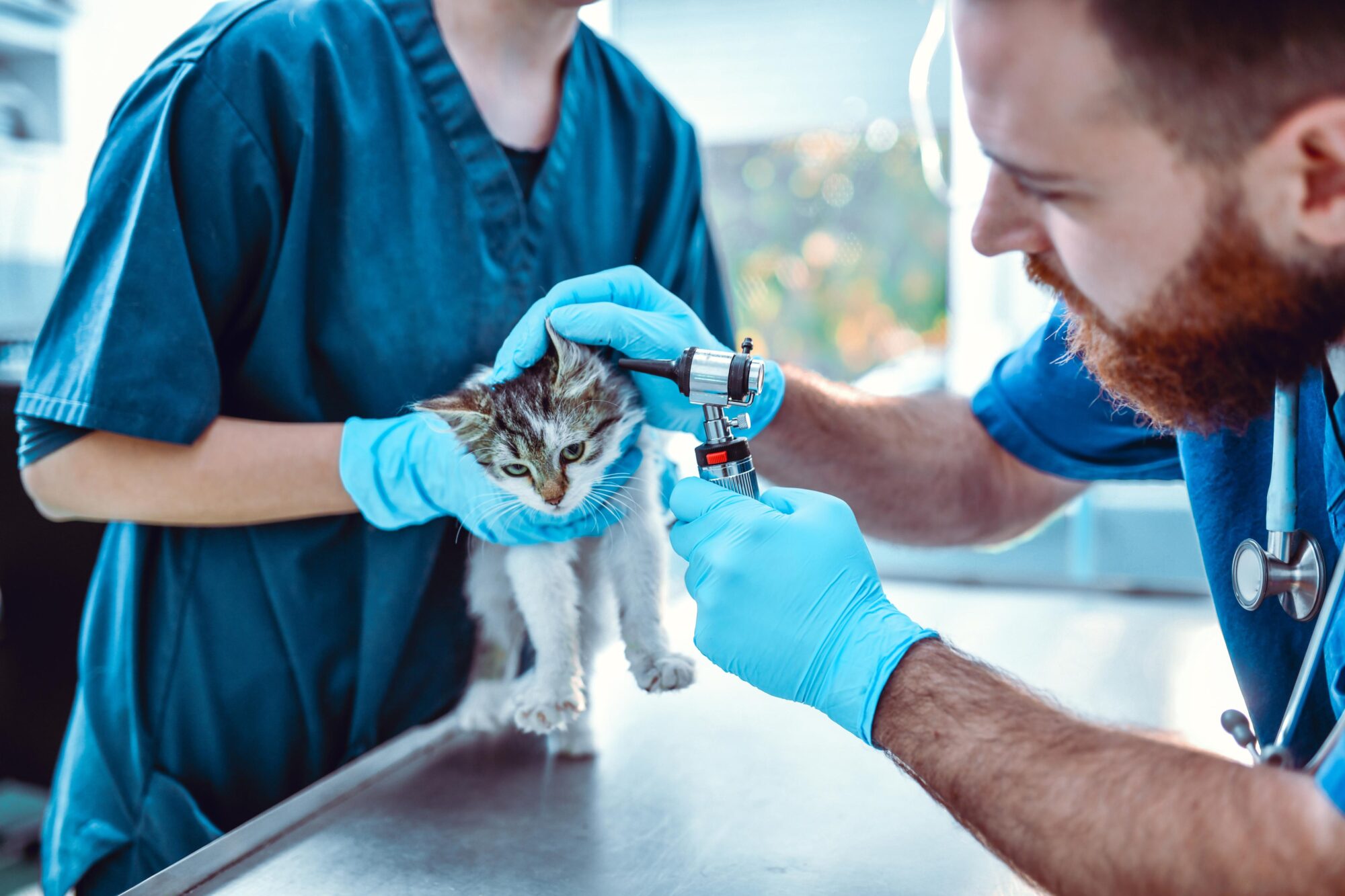Common Cat Illnesses and Treatments

Cats are naturally quiet pets. With their slinky physicality, retractable claws, and stealth, their location and agenda is not always known. Consequently, when a cat self-isolates because they’re hurt or ill, their symptoms may not be immediately recognizable. Knowing the most common cat illnesses can save a lot of time (and money), and may even impact treatment and prognosis.
A Daily Check-In
It’s easy to fall into daily routines and take things like overall wellness for granted. Add this to the fact that cats hide their symptoms, and it can be downright challenging to address possible issues.
Responsible cat ownership involves taking time every day to check in. This may be in the form of an extended cuddle session, play time, or it may be focused attention to their teeth or coat. Whatever the approach, note any potential changes (even subtle ones) to their behavior or appearance.
Importance of Regular Exams
Some cat illnesses can be detected long before symptoms arise. With routine wellness exams every 6-12 months, we can rule out the development of several common cat diseases with in-house diagnostics like blood work and urinalysis. Routine attention to cat health, especially as they age, has the potential to prevent certain conditions and/or treat issues before they get out of hand.
Time’s of the Essence
There are some conditions that improve with time, but most feline afflictions need immediate veterinary attention. The most common cat health issues include:
- Cancer
- Feline Leukemia (FeLV)
- Feline Immunodeficiency Virus (FIV)
- Diabetes
- Arthritis
- Kidney Disease
- Urinary Tract Disease
- Upper respiratory Disease
- Periodontal Disease
Because certain feline diseases progress quickly, we urge cat owners to call us for symptom-specific advice, and prepare for a trip to our hospital.
Never Ignore These Symptoms
Any changes to your cat’s behavior require special attention and handling. In addition, we urge cat owners to act quickly if any of the following symptoms appear:
- Diarrhea or vomiting
- Difficulty passing urine or feces
- Decreased appetite
- Increased thirst, frequent urination
- Sudden, unexplained weight loss
- Hiding/withdrawal
- Strained breathing
- Lumps or bumps
- Skin infection, abscess, or sores
- Bad or sweet-smelling breath
- Fever
- Poor coat condition or hair loss
- Discharge or inflammation of the eyes, nose, or gums
Write down the first time you see a certain symptom and note whether it gets worse in a short time. While none of the above symptoms are considered normal, the following signs indicate emergency veterinary care:
- Severe, uncontrollable bleeding
- Choking or continuous gagging
- Seizures
- Loss of consciousness
If you have any questions or concerns about your cat’s behavior or appearance, please call us at (916) 939‑1705. Our veterinarians are always here to help at MarketPlace Veterinary Hospital.

